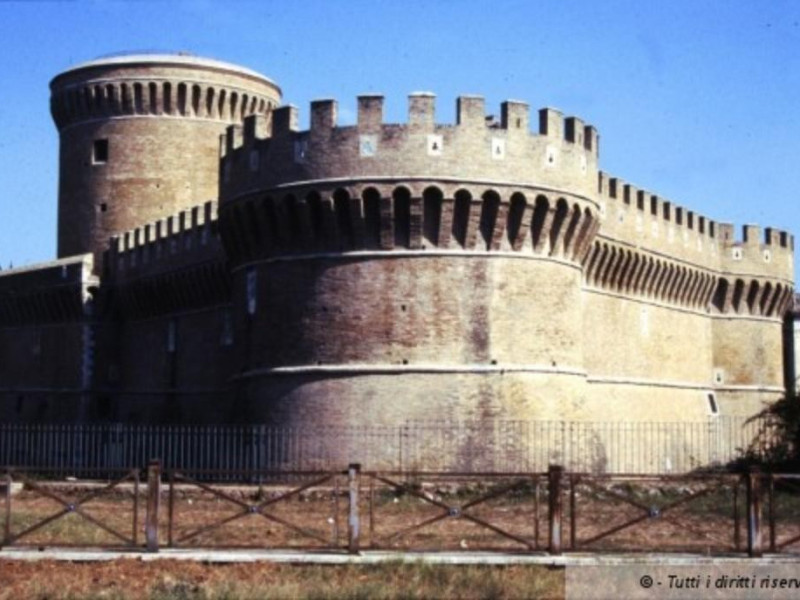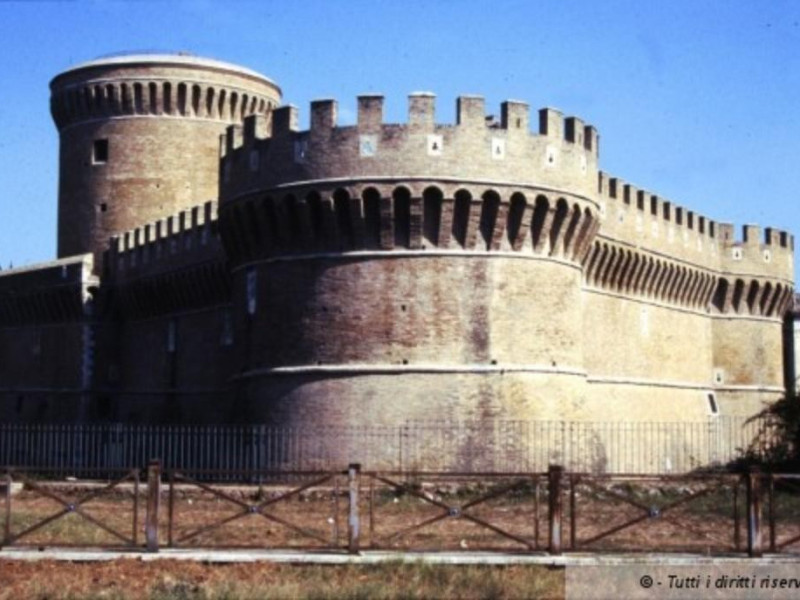Castello di Giulio II
In 1483, under the pontificate of Sixtus IV, the bishop of Ostia, Cardinal Giuliano della Rovere, the future Pope Julius II, began building the castle of Ostia, completed in 1486 by Pope Innocent VIII. The fortress incorporated the most ancient round tower, built in 1423-24 by Pope Martin V Colonna, who became the main tower of the new building.
In the fortress was the seat of the papal customs, which regulated the payment of taxes on goods arriving in Rome by sea. Ascended the papal throne, Pope Julius II (1503-1513) ordered major changes: it was built on the western side of the courtyard, renovating some environments era Borgia, a true papal apartment. The three floors of the building were connected by a monumental staircase, painted, according to recent studies, by Baldassare Peruzzi with some co-workers including the Lombard Cesare da Sesto.
At the end of the conflict between France and Spain, the fortress of Ostia in 1556 underwent a famous siege by the Spaniards, which resulted in some damage to the structure. The following year, in 1557, following a sensational full, the Tiber River changed its course away for coming to follow a new path, preserved to this day. This caused the transfer of the papal customs before Tor Tor Boacciana and then to St. Michael.
In the eighteenth century the castle was used as a barn and then in the next century it became a prison for forced labor as used in the excavations of Ostia. After several restorations made during the course of the twentieth century in 2003 was made a new museum in several rooms of the Papal apartments and the tower, exposing the most significant part of the collection of ceramics from the late Middle Ages and Renaissance, from excavations made in the last century in the castle and the village.


